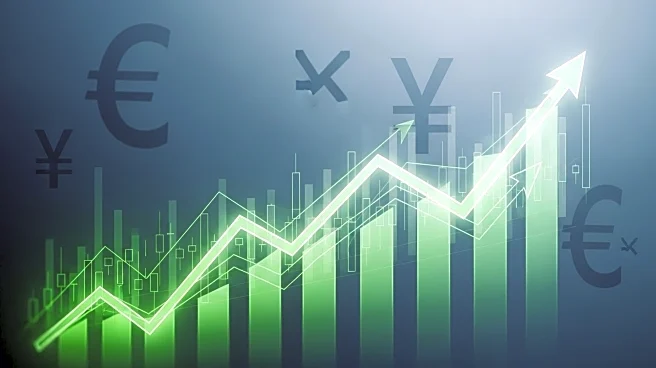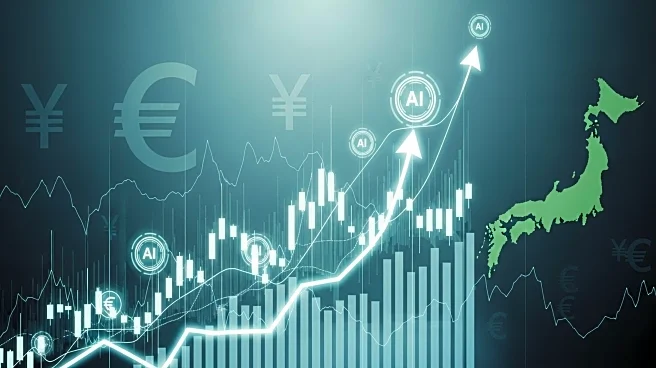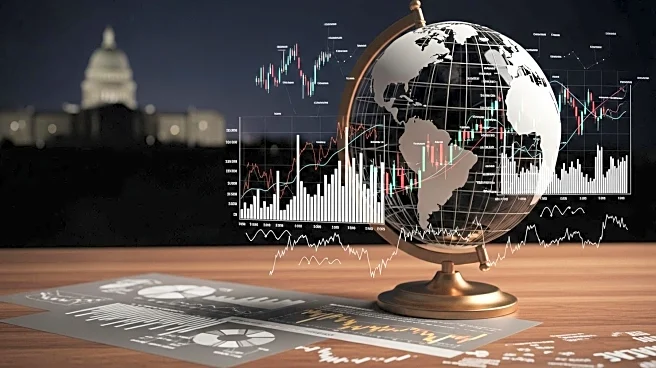What is the story about?
What's Happening?
Gold continued its record-breaking rally on Tuesday, coming within $22 of the $4,000 per ounce milestone. This surge is driven by expectations of a Federal Reserve rate cut later this month and persistent safe-haven demand amid the ongoing U.S. government shutdown. Spot gold increased by 0.4% to $3,978.01 per ounce, while U.S. gold futures for December delivery rose to $4,000.90, marking the first time it breached the $4,000/oz milestone. The rally is fueled by a combination of factors, including political and economic uncertainty, central bank buying, and a weak dollar.
Why It's Important?
Gold's ascent to near $4,000 reflects heightened investor anxiety due to political and economic instability. The government shutdown has postponed key economic indicators, forcing investors to rely on secondary data. This uncertainty, coupled with expectations of interest rate cuts, is driving demand for gold as a safe-haven asset. The situation impacts various stakeholders, including investors, central banks, and policymakers, as they navigate the complexities of market volatility and economic forecasts. The rally in gold prices may influence future investment strategies and economic policies.
What's Next?
If applicable, investors are closely watching the Federal Reserve's upcoming meeting, where a 25-basis-point rate cut is anticipated. The ongoing government shutdown may continue to affect market sentiment, with no immediate resolution in sight. Analysts are also monitoring global political developments, such as turmoil in France and Japan, which could further impact currency and bond markets. The trajectory of gold prices will depend on these factors, as well as central bank actions and ETF inflows.
Beyond the Headlines
If applicable, the current gold rally may prompt discussions on the role of safe-haven assets in times of political and economic uncertainty. The situation highlights the importance of diversification in investment portfolios and may lead to shifts in asset allocation strategies. Long-term implications could include changes in central bank policies and increased focus on geopolitical risks.
AI Generated Content
Do you find this article useful?














